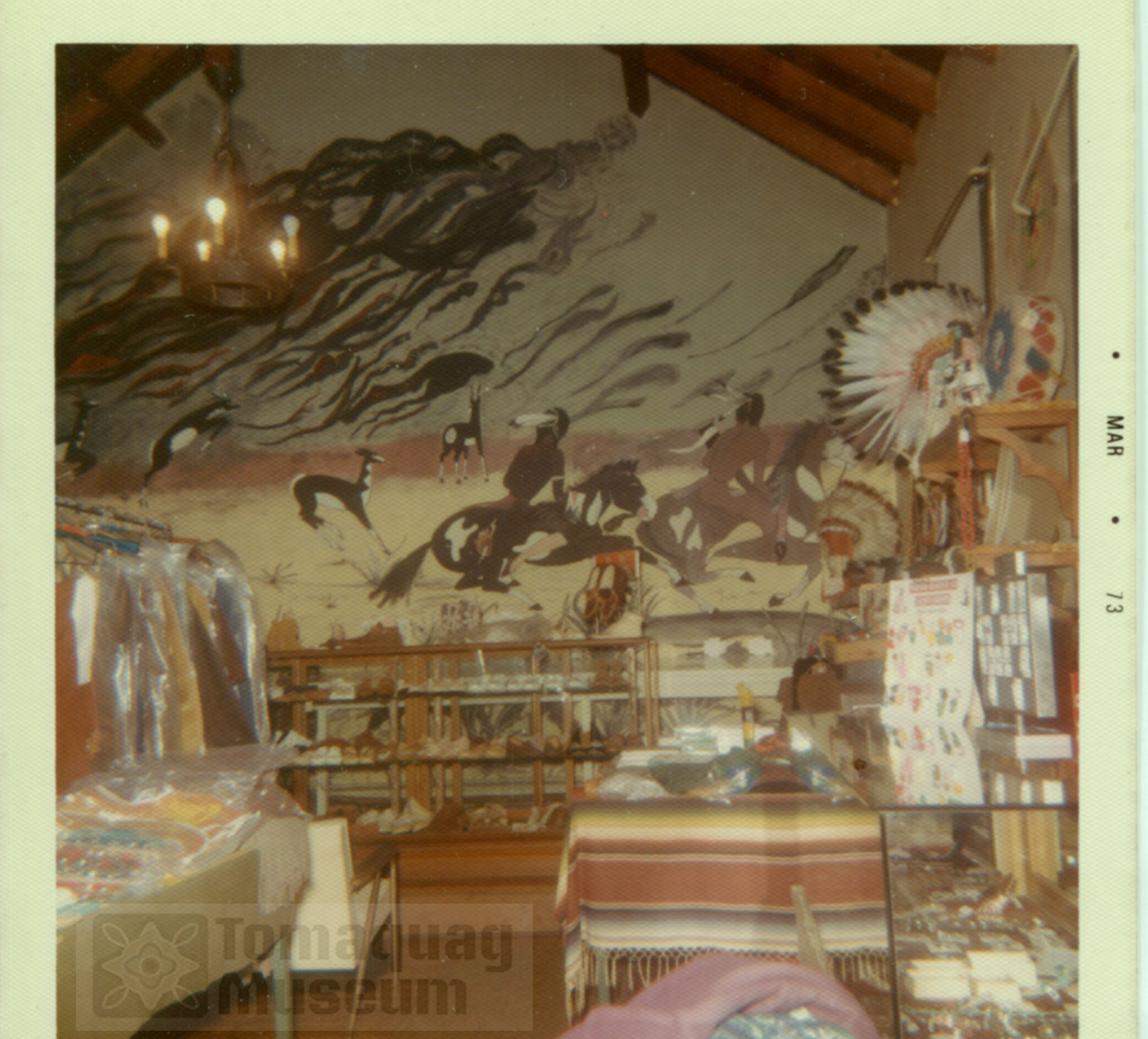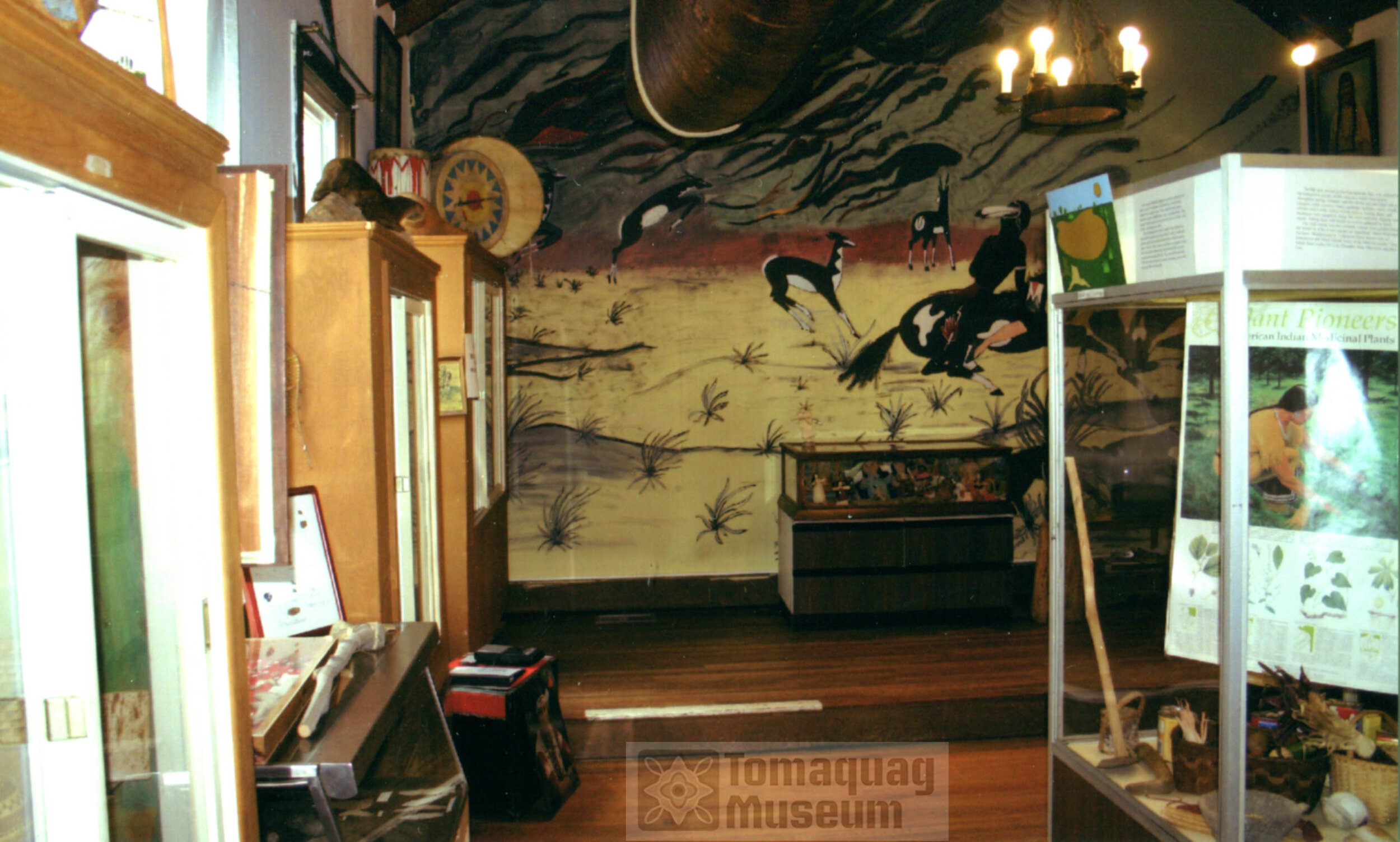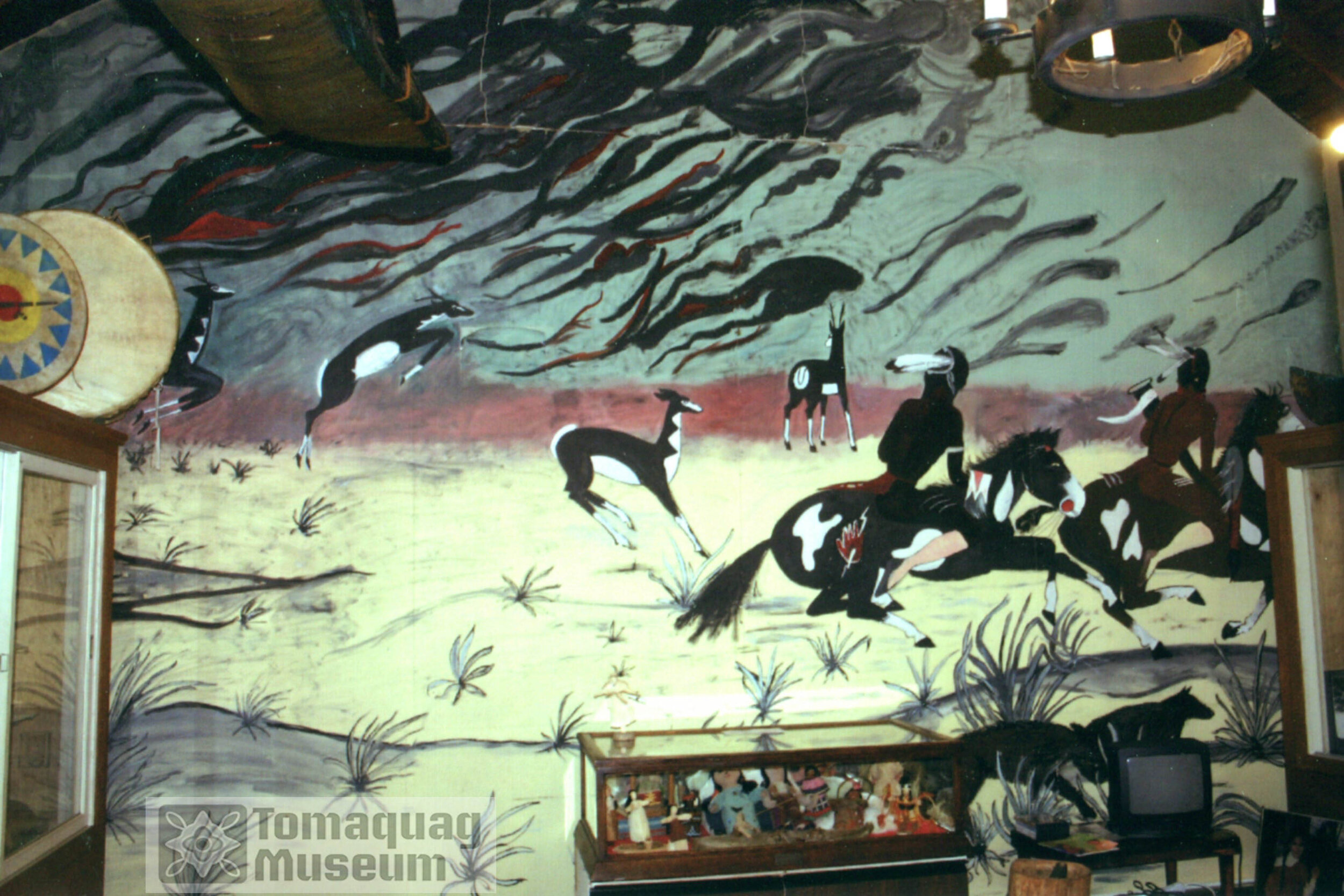From the Archives: Prairie Fire Mural
Welcome to the inaugural installment of From the Archives, a new series in the Belongings Blog where our Archivist and Collections Manager Anthony Belz will be sharing some of the interesting items he has found in the Tomaquag Museum collections.
When you visited Tomaquag Museum did you ever notice the large mural on the wall at the far end of the museum? Or have you seen it in a photograph or film from one of our events and wondered what was there? In this post we’ll tell you the interesting history of this amazing and enduring mural that has been a feature in this building for around 60 years.
Dovecrest, circa 1950s. Tomaquag Museum Archives.
First, I’d like to begin by sharing a little history about how the mural came to be in the museum. Around 1955, Eleanor & Ferris Dove had purchased what was is now the museum property and named it Dovecrest, since it was located on the crest of a hill.
Ferris Dove, Dovecrest Event Room, early 1960s. Tomaquag Museum Archives.
The mural was painted in the early 1960s by Princess Red Wing (Narragansett, Pokanoket Wampanoag) and Julian Freeman (Narragansett) to occupy the giant wall in the Dovecrest Restaurant event room (which would later became the Dovecrest Trading Post). During the time the space was used for events the mural served as a backdrop to many weddings, anniversary celebrations, birthday parties, dances and other social functions. It then remained a prominent feature in the Trading Post until its closure in 1984 when Eleanor Dove sold the property.
Dovecrest Trading Post, March 1973. Tomaquag Museum Archives
The mural is a grand sized reproduction of a 1953 painting entitled Prairie Fire by a Kiowa-Comanche artist from Oklahoma, Francis Blackbear Bosin, Sr. (1921-1980), also known as Tsate Kongia. In 1955, Prairie Fire was published by National Geographic Magazine on the cover of the book Indians of the Americas and won first place in the Philbrook Museum competition, where the painting is now part of their permanent collection.
Dovecrest Trading Post postcard, 1960s. Tomaquag Museum Archives
The images from the Tomaquag Archives show the mural as it first appeared in the Dovecrest event room and later Trading Post in the 1960s and 1970s, as well as when the space officially became the Tomaquag Museum in 1996 (See slideshow below). Although the mural depicts the Indigenous people of the Plains, in its time period, the mid-1950s, it was an expression “Indian” pride. It is the same pride the Dove Family has shared through the establishment of both the Dovecrest Restaurant and Trading Post, and has been further demonstrated through their community leadership and multi-generational support of the Tomaquag Museum.
Francis Blackbear Bosin, Prairie Fire, 1953. Indians of the Americas, National Geographic Magazine, 1955. Reproduction from book cover. Tomaquag Museum Archives.
Archival images such as those featured in this blog post facilitate conversations about Indigenous traditional lifeways, art, representation/stereotypes and pervasive historical and cultural misconceptions in modern society, as well as equity and sovereignty issues. Archival materials also aid greatly in research, exhibit development, publications, films and other collaborative projects. If you would like to support the care of archival documents, photographs, maps & more at the Tomaquag Museum please Donate Now. If you have any ideas for what you would like to see as part of this blog series, please comment below. Thank you for reading and we hope to see you at the museum in the future!
Anthony M. Belz, Archivist/Collections Manager
This project is made possible in part by the Rhode Island Council for the Humanities-an independent affiliate of the National Endowment for the Humanities.
“Any views, findings, conclusions or recommendations expressed in this (publication, program, exhibition, website, etc.) do not necessarily represent those of the National Endowment for the Humanities.”
For more information about the life and artistic works of Blackbear Bosin please click on these links:
https://www.kshs.org/kansapedia/blackbear-bosin/11985
https://www.okhistory.org/publications/enc/entry.php?entry=BO033









